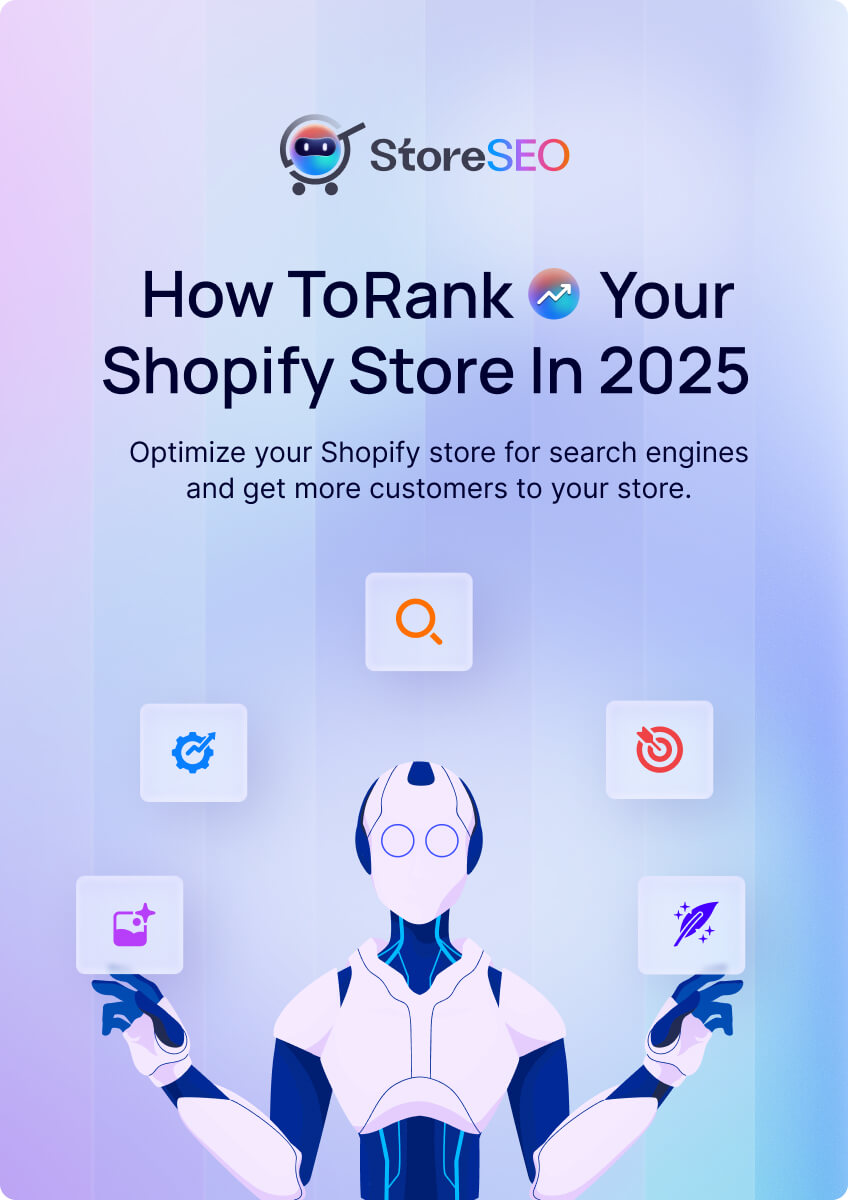Local SEO for eCommerce businesses plays an essential role in growth, especially Shopify stores which want to attract local customers. In this blog, we will discuss how you can apply successful local SEO tactics to optimize your store for local searches and increase organic traffic.

📖 A Quick Introduction to Local SEO
Local SEO means improving the visibility of your website to increase traffic from relevant local searches. In other words, when shoppers search for ‘Cat food in New York,’ local SEO helps ensure that your store appears in the search results if you sell cat food.
⭐ Difference Between Local SEO & Traditional SEO
Traditional SEO focuses on improving your site’s visibility on a global scale, while local SEO targets local searches and aims to improve your visibility within a specific geographic area.
For example, if you use traditional SEO strategies to optimize a pet supply store, you may want to rank for broad phrases such as “pet supplies” or “dog food.” Whereas with local SEO, if you own a physical pet store in New York City, you might target keywords such as “pet store in NYC” or “dog food near me” to attract shoppers looking for products in their area. This targeted approach lets businesses connect with people nearby who are actively looking for products or services.
⭐ Key Components of Local SEO
According to Google, relevance, distance, and prominence are the main elements that influence search results. You need to connect all of these dots to get success from your efforts. For local SEO, you should focus on the following components to enhance your chance of ranking on these searches:
- Google My Business (GMB): A tool for managing your online presence across Google.
- On-Page SEO: Optimizing individual pages to rank higher and earn more relevant traffic.
- Local Citations & Backlinks: Mentions of your business on other websites.
- Reviews: Customer reviews and ratings.
✨ Local SEO for eCommerce: How to Optimize Your Store
Now that you know what are the key components of local SEO, let us get into the action. In this section, you will learn how you can optimize the key components of local SEO to attract local customers.
⚙️ Set Up Google My Business (GMB)
Creating and optimizing your Google My Business (GMB) listing involves several key steps. Provide accurate and complete information about your business and then verify your business to confirm its legitimacy. Afterward, optimize your business description with relevant keywords.

You should upload high-quality images showcasing your business, products, and services. Finally, maintain engagement with your audience by regularly posting updates, offers, and news through GMB posts and updates.
These steps collectively help improve your local search visibility and attract more customers to your business.
📍 Optimize On-Page SEO
On-page optimization is very important for getting visibility in the search engine’s results pages. To optimize your web pages for SEO, use meaningful and keyword-rich title tags and meta descriptions that appropriately reflect your page’s content. Also, follow the best SEO practices and use header tags (H1, H2, H3) to arrange your content and insert local keywords as needed.

Other than that, publish blogs that address local events, news, and hobbies to effectively engage your target audience. You can also create separate location pages for each area you service, giving personalized information that appeals to local searchers and increases your exposure in local search results. These methods can help you bring more local traffic and potential customers to your store.
🔗 Manage Local Citations & Backlinks
Citations and backlinks are essential for boosting your website’s authority and local search ranks through local SEO initiatives. To get effective local citations, start by listing your business in local directories where customers are likely to look for products or services similar to yours. Consider industry-specific directories that target your particular specialty, which will increase your visibility among your target audience.

You should also think about collaborations and sponsorships with other local businesses or events to increase your chances of getting backlinks. Besides, guest blogging opportunities on local websites can allow you to reach a larger local audience while earning valuable backlinks. In addition to that, sending press releases to local media outlets might result in local news coverage and authoritative backlinks, which will significantly improve your local SEO efforts.
⭐ Collect Your Customer Reviews
Online reviews are important in local SEO since they shape your business’s online reputation and have a big impact on local search rankings. You should ask your customers to post reviews to improve exposure and legitimacy.
One effective way to streamline the review collection process on Shopify is by using a review collection app like TrustSync. It will help you to send review request emails automatically. Offering incentives, such as discounts could motivate customers to provide feedback.
Once you get reviews from your customers, you should respond to all, whether positive or negative, in a timely and professional manner. It will showcase your commitment to customer satisfaction and improve your brand’s reputation.
✨ Advanced Tips: Simplify Local SEO With StoreSEO
When it comes to optimizing Shopify stores for SEO, StoreSEO comes with all the features that you need to boost your online presence. It has local SEO features that will help you get a significant boost in local search results. Let us have a quick look at how you can use StoreSEO local SEO features.
First of all, you need to install the StoreSEO app on your Shopify store and upgrade your subscription plan. Afterward, follow the simple steps below.
Step 1: Turn On Your JSON-LD
Go to the ‘General Settings’ from StoreSEO dashboard and toggle on the JSON-LD option. Afterward, you will be able to set up the local SEO of your store with StoreSEO.

Step 2: Provide Your Business Information
Now, go to the ‘Local SEO’ tab, and provide your store business information there. You can upload your logo, phone number, price range, etc. from there.
Then update your store address, and add the social media links before hitting the ‘Save Changes’ button. If you are still confused follow this documentation on customizing the JASON-LD or reach out to the StoreSEO support team for help.

⚡ Bring Local Customers To Your eCommerce Store
Local SEO for eCommerce businesses is very important to bring customers to your store. Emphasizing local SEO not only improves your eCommerce store’s visibility among local customers but also builds trust and credibility, resulting in increased traffic and sales. So, optimize your store for local SEO today and boost your business growth.
Have you found our blog useful? If you do, please subscribe to our blog for more tips, tutorials, and updates on industry-related topics.









